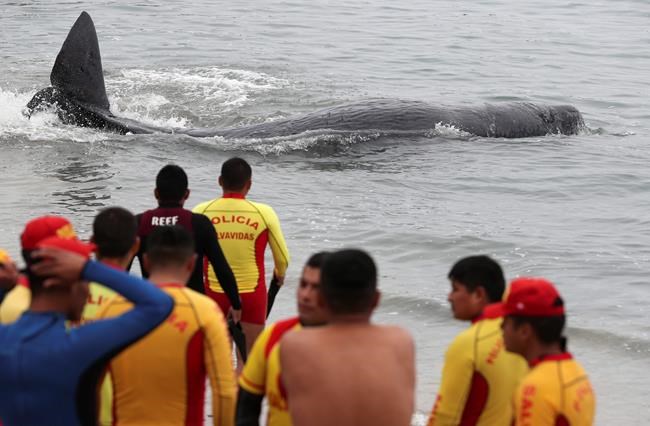Research from N.S. prof suggests sperm whales taught each other how to avoid whalers
Advertisement
Read this article for free:
or
Already have an account? Log in here »
We need your support!
Local journalism needs your support!
As we navigate through unprecedented times, our journalists are working harder than ever to bring you the latest local updates to keep you safe and informed.
Now, more than ever, we need your support.
Starting at $15.99 plus taxes every four weeks you can access your Brandon Sun online and full access to all content as it appears on our website.
Subscribe Nowor call circulation directly at (204) 727-0527.
Your pledge helps to ensure we provide the news that matters most to your community!
To continue reading, please subscribe:
Add Brandon Sun access to your Free Press subscription for only an additional
$1 for the first 4 weeks*
*Your next subscription payment will increase by $1.00 and you will be charged $20.00 plus GST for four weeks. After four weeks, your payment will increase to $24.00 plus GST every four weeks.
Read unlimited articles for free today:
or
Already have an account? Log in here »
Hey there, time traveller!
This article was published 17/03/2021 (1685 days ago), so information in it may no longer be current.
HALIFAX – New research from a team including a Dalhousie University biologistsuggests sperm whales taught each other to avoid whalers in the 18th and 19th centuries.
A research paper published in the journal Biology Letters Wednesday indicates that in the North Pacific the whales — the same species hunted in Herman Melville’s “Moby Dick” — quickly changed their habits to avoid open-boat whalers.
“What seems to have been going on is that the whales had been learning techniques to avoid this new threat that appeared, these guys in their boats,” Dalhousie University professor Hal Whitehead said in an interview. “They learned very quickly and they learned, it seems, from each other.”

During the 18th and 19th centuries, whalers from Europe and North America searched the world’s waters to find new species to exploit, the paper says.
After discovering sperm whales, they searched for the mammals in large, sail-powered whaling ships, and once whales were sighted, hunters would go out in row boats and attempt to strike them with hand-thrown harpoons. If the trip was successful, the bodies were towed back to the ship for oil processing.
Whitehead, co-author of the study, said log books from American whalers in the North Pacific show that successful harpoon strikes fell by about 58 per cent over the first few years of hunting in a region.
“I didn’t expect it to be that clear, frankly,” he said of the results. “I was pretty amazed when I looked at it.”
The Halifax university professor said the large mammals may have learned to adopt defensive measures from others in their close social units.
Some of the evasive methodsnoted in the log books by whalers during the 19th century included swimming upwind to evade the hunters’ row boats and getting close enough to attack the vessels.
The biggest change noted in the logs, however, was that the whales abandoned the characteristic defensive behaviour they had adopted against what was previously their main predator: killer whales.
Whitehead said sperm whales gather their young and create a barrier around them while fending off killer whales using their jaws and tails.
“This is exactly the wrong thing when you’re faced with Captain Ahab,” Whitehead said in reference to the “Moby Dick” skipper, “because to gather in a tight group, it’s a lovely, big target for someone throwing a harpoon.”
The research paper said fleeing whales possibly made themselves more visible from a distance “by blowing hard and showing their bodies forcefully, so increasing the number of sightings with groups that were not easily struck.”
The research also indicated sperm whales could likely sense and co-ordinate behaviour over several kilometres. Sperm whales are highly communicative, Whitehead added, using their massive nose to make powerful sounds.
It’s likely a group of sperm whales that had experienced whalers before and figured out how to deal with them communicated their strategy to other pods in the region, he added.
“Since the sperm whales are so social and communal, it makes sense that they do this socially and communally,” Whitehead said.
This report by The Canadian Press was first published March 17, 2021.
– – –
This story was produced with the financial assistance of the Facebook and Canadian Press News Fellowship.
